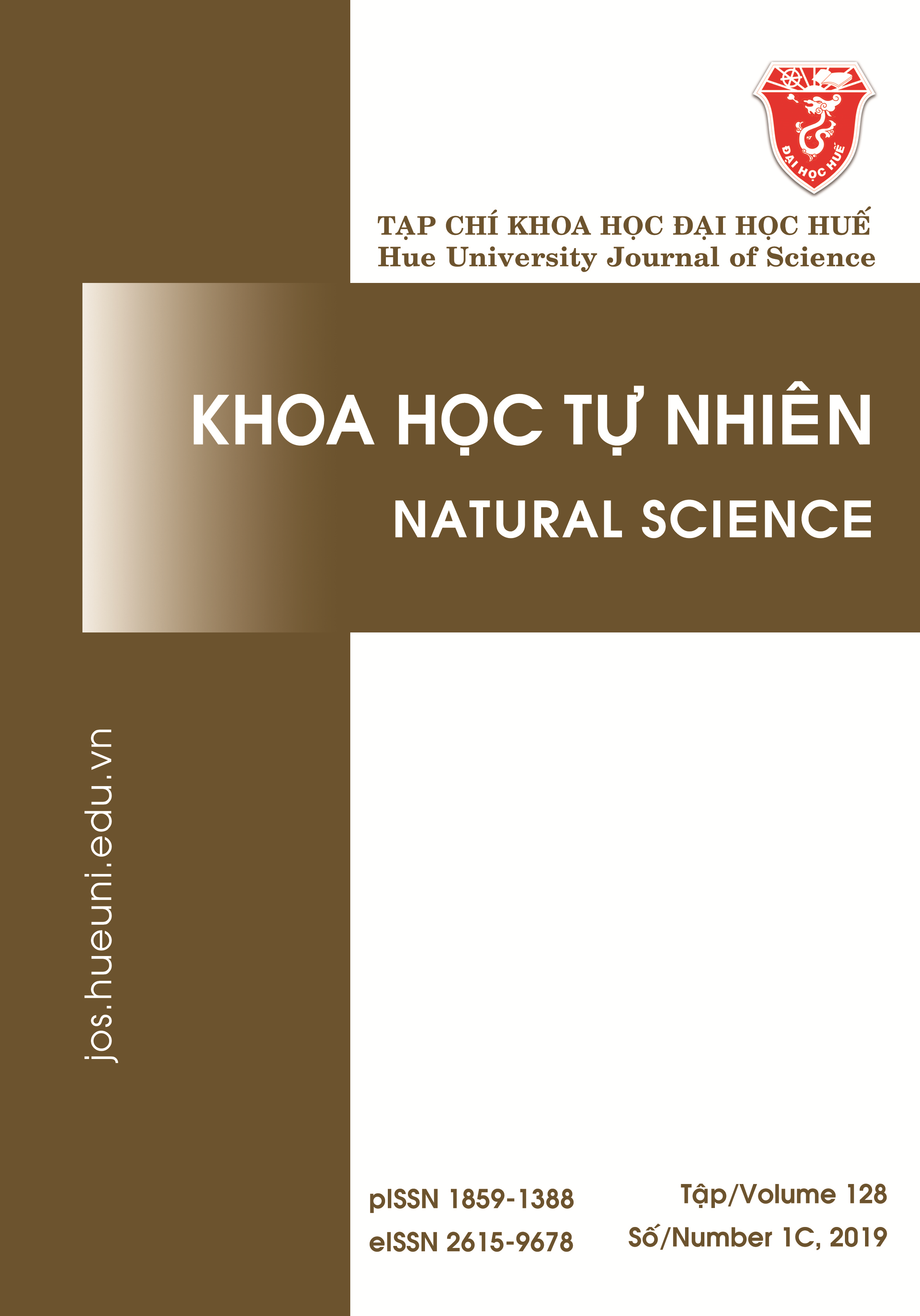Abstract
The bismuth film electrode prepared in-situ on glassy carbon disk surface (abbreviated to BiFE in-situ) was used as a working electrode for Differential Pulse Anodic Stripping Voltammetry (DP-ASV) for the determination of copper (Cu) and lead (Pb) in an acetate buffer (pH = 5). The influence of the factors on Cu and Pb stripping peak currents (Ip), such as BiIII concentration, pH, deposition potential, deposition time, electrode rotating speed, and interferents, was investigated. At the deposition potential of –1400 mV, the deposition time of 120 s, and other appropriate experimental parameters, the method obtains high sensitivity (0.313 ± 0.004; 0.220 ± 0.010 μA/ppb for Cu and Pb, respectively), good reproducibility of the Ip (RSD = 3.2% and 1.8% (n = 8) for Cu and Pb respectively); low detection limit (3s = 1.8 ppb and 0.8 ppb for Cu and Pb, respectively); linear correlation between Ip and the metal concentration is good in the range of 2.5–25 ppb each metal (R ≥ 0.995). The method has been successfully applied to identify Cu and Pb in three water samples at Thua Thien Hue province.
References
- Bá LH. Độc học môi trường. Hồ Chí Minh: Nhà xuất bản Đại học Quốc gia TPHCM; 2001.
- Hợp NV, Phong NH, Khánh ĐV, Nghi TV. Điện cực màng Bismut cho phương pháp von-ampe hoà tan: áp dụng để xác định lượng vết chì và cadimi. Tạp chí Hoá học. 2009;47(5A):253-258.
- Stozhko NU, Malakhova NA, Fyodorov MV, Brainina KZ. Modified carbon-containing electrodes in stripping voltammetry of metal. Journal of Solid State Electrochemistry. 2008;12:1185-1204.
- Wang J, Lu J, Hocevar S, Farias P. Bismuth-Coated Carbon Electrodes for Anodic Stripping Voltammetry. Analytical Chemistry. 2000;72:3218-3222.
- Khánh ĐV, Dũng TC, Hợp NV, Nghi TV. Nghiên cứu phát triển điện cực màng bismut để xác định lượng vết chì và cadimi bằng phương pháp von-ampe hòa tan hấp phụ. Hội nghị khoa học phân tích hóa, lý và Sinh học Việt Nam lần thứ 2; 2005. Trang 232-237.
- Erika P, Ieva L, Saulius A. Determination of chromium in cement by catalytic adsorptive stripping voltammetry. Chemija. 2011;22(4):210-215.
- Xiao L, Xu H, Zhou S, Song T, Wang H, Li S, Gan W, Yuan Q. Simultaneous detection of Cd (II) and Pb (II) by differential pulse anodic stripping voltammetry at a nitrogen-doped microporous carbon/Nafion/bismuth-film electrode. Electrochim Acta. 2014;143:143-151.
- Ruecha N, Rodthongkum N, Cate DM, Volckens J, Chailapakul O, Henry CS. Sensitive electrochemical sensor using a graphene-polyaniline nanocomposite for simultaneous detection of Zn(II), Cd(II), and Pb(II). Analytica Chimica Acta. 2015;874:40-48.
- Pauliukaite R, Brett C. Characterization and application of bismuth-film modified carbon film electrodes. Electroanalysis. 2005;17:1354-1359.
- Keawkim K, Chuanuwatanakul S, Chailapakul O, Motomizu S. Determination of lead and cadmium in rice samples by sequential injection/anodicstripping voltammetry using a bismuth film/crown ether/ nafion modified screen-printed carbon electrode. Food Control. 2013;31:14-21.
- Horwitz W, Albert R. The Concept of Uncertainty as Applied to Chemical Measurement. Analyst. 1997; 122:615-617.
- Miller JN, Miller JC. Statistics and Chemometrics for Analytical Chemistry. Harlow (GB): Pearson/Prentice Hall; 2005.

This work is licensed under a Creative Commons Attribution-ShareAlike 4.0 International License.
Copyright (c) 2019 Array




